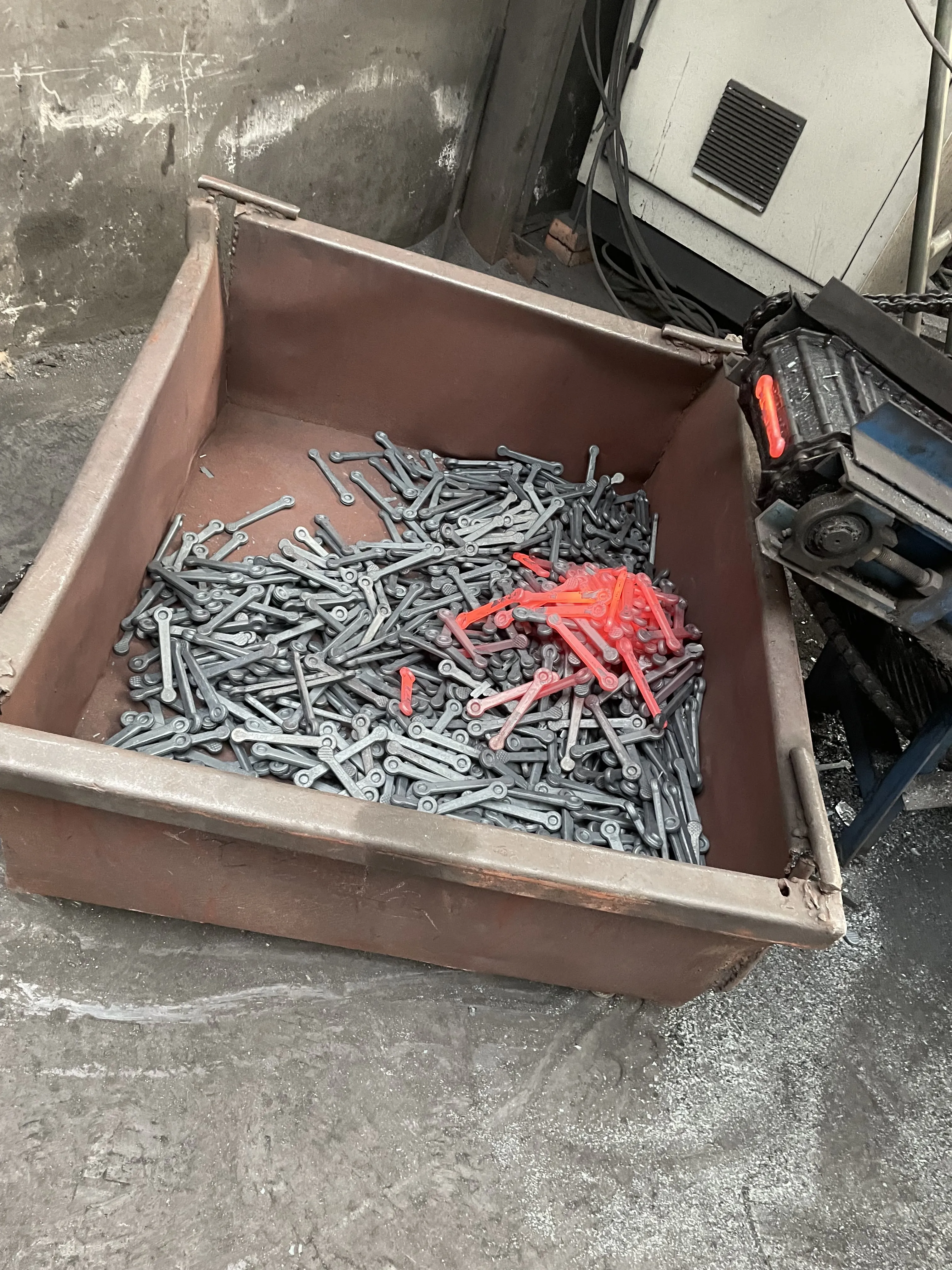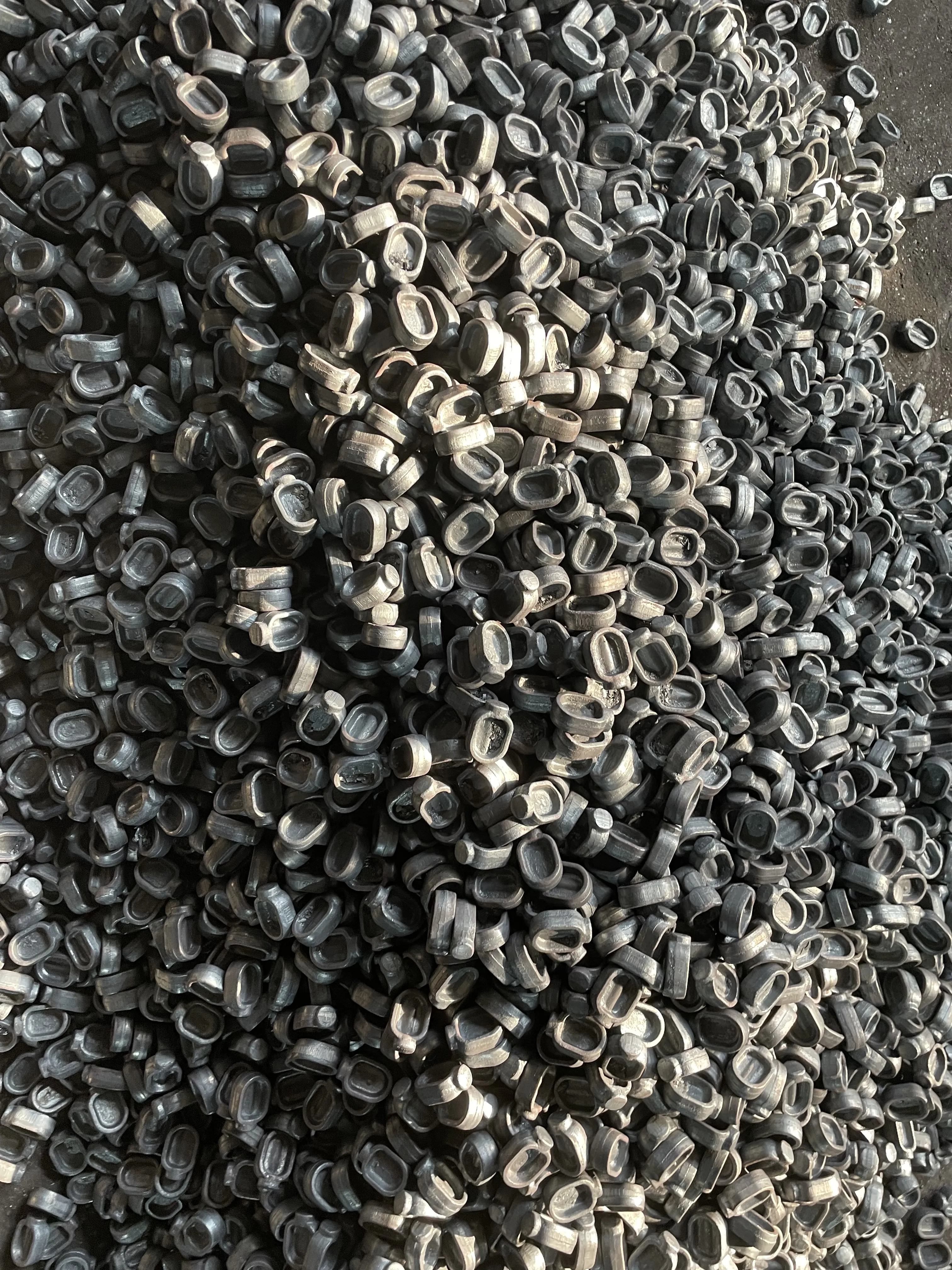What is forging
Forging is a method of processing materials by heating metal to a plastic state and applying force to shape the material. This allows the material to be hammered, compressed, or stretched into the desired shape. Forging can eliminate defects such as casting porosity generated during the metallurgical process, optimize the microstructure, and because the complete metal flowline is preserved, the mechanical properties of forgings are generally superior to those of castings of the same material.
The beginning of steel recrystallization temperature is about 727℃, but 800℃ is commonly used as the dividing line. Above 800℃ is hot forging; between 300-800℃ is called warm forging or semi-hot forging, and forging at room temperature is called cold forging.
The production of lifting-related parts usually uses hot forging.

Forging process
The production steps of hot forging bolts are: cutting → heating (resistance wire heating) → forging → punching → trimming → shot blasting → threading → galvanizing → wire cleaning

Cutting: Cut the round bar into appropriate lengths
Heating: Heat the round bar to a plastic state by resistance wire heating
Forging: Change the material shape by force under the influence of the mold
Punching: Process the hollow hole in the middle of the workpiece
Trimming: Remove excess material
Shot blasting: Remove burrs, increase surface finish, increase roughness, and facilitate galvanizing
Threading: Process threads
Galvanizing: Increase rust resistance
Wire cleaning: After galvanizing, there may be some zinc slag remaining in the thread. This process cleans the thread and ensures tightness.
Features of forged parts
Compared with castings, metal processed by forging can improve its microstructure and mechanical properties. After the forging method hot working deformation of the casting structure, due to the deformation and recrystallization of the metal, the original coarse dendrite and columnar grains become grains that are finer and equally distributed with equiaxed recrystallized structure. The original segregation, looseness, pores, and inclusions in the steel ingot are compacted and welded by pressure, and their structure becomes more compact, which improves the metal’s plasticity and mechanical properties.
The mechanical properties of castings are lower than those of forgings of the same material. In addition, forging processing can ensure the continuity of the metal fiber structure, so that the fiber structure of the forging is consistent with the forging shape, and the metal flow line is intact, which can ensure that the parts have good mechanical properties and a long service life. Forgings produced by precision forging, cold extrusion, and warm extrusion processes cannot be compared with castings.
Forgings are objects shaped by applying pressure to metal through plastic deformation to meet the required shape or suitable compression force. This type of force is typically achieved using an iron hammer or pressure. The forging process builds a delicate grain structure and improves the physical properties of the metal. In the actual use of components, a correct design can make the grain flow in the direction of the main pressure. Castings are metal-shaped objects obtained by various casting methods, in other words, the smelted liquid metal is injected into a prepared mold by pouring, pressure injection, suction, or other casting methods, and after cooling, the obtained object has certain shape, size, and performance after cleaning and post-processing, etc.
Application of forged parts
Forging production is one of the main processing methods that provide rough machining of mechanical parts in the mechanical manufacturing industry. By forging, not only can the shape of mechanical parts be obtained, but the internal structure of the metal can also be improved, and the mechanical properties and physical properties of the metal can be improved. Forging production methods are mostly used to manufacture important mechanical parts that are subjected to large forces and have high requirements. For example, steam turbine generator shafts, rotors, impellers, blades, shrouds, large hydraulic press columns, high-pressure cylinders, rolling mill rolls, internal combustion engine cranks, connecting rods, gears, bearings, and important parts in the national defense industry such as artillery are all produced by forging.
Therefore, forging production is widely used in the metallurgical, mining, automotive, tractor, harvesting machinery, petroleum, chemical, aviation, aerospace, weapons, and other industrial sectors. In daily life, forging production also occupies an important position.
If you have other question about the bolts production, pls feel to contact us.
Sherry Cen
JMET CORP., Jiangsu Sainty International Group
Address: Building D, 21, Software Avenue, Jiangsu, China
Tel. 0086-25-52876434
WhatsApp:+86 17768118580
E-mail [email protected]
